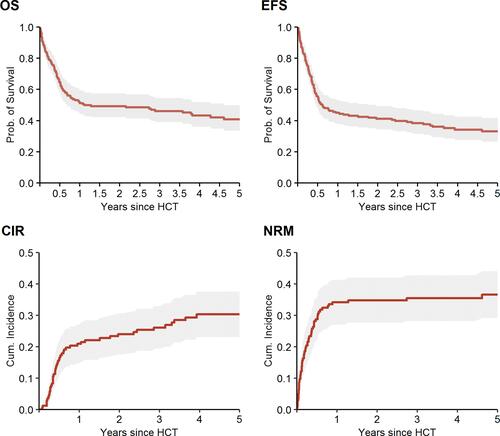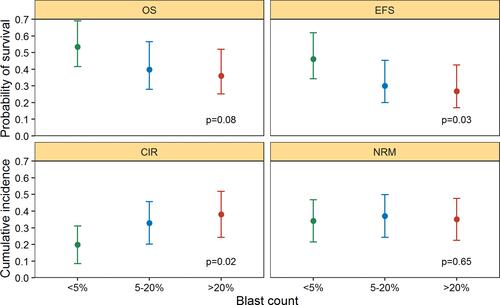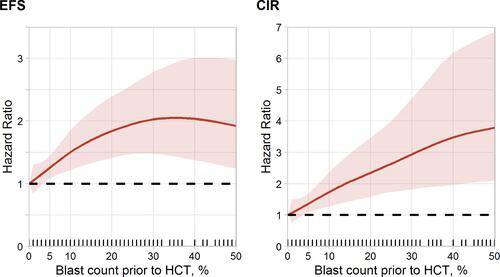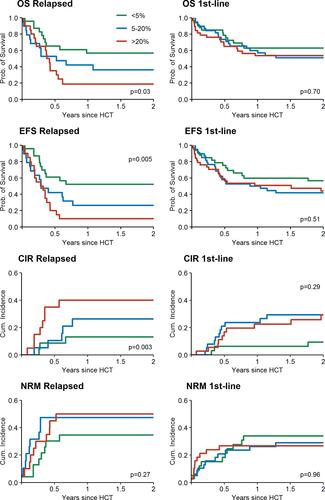Figures & data
Table 1 Patient Characteristics
Figure 1 OS, EFS, CIR and NRM for the entire cohort.

Table 2 Multivariate Analysis for Overall Survival, Event-Free Survival, Relapse Incidence and Non-Relapse Mortality
Figure 2 Four year point estimator of treatment outcome by pretransplant bone marrow blast count. The dots display the point estimates, whereas the bars display the corresponding 95% confidence intervals. The p values represent the Log rank test for OS and EFS and the score test of univariate cause-specific Cox models for CIR and NRM.

Figure 3 Effect of bone marrow blast count prior to HCT on event-free survival and on incidence of relapse. The red curve displays the smoothed spline-based hazard ratio of the dependence of the bone marrow blast count prior to HCT on the all-time risk of relapse or death (left panel) and the all-time risk of relapse (right panel). The hazard ratio is adjusted for age, Karnofsky performance status, AML type, ELN risk, treatment status at HCT, conditioning and donor type. The ribbon represent the pointwise 90% confidence intervals of the hazard ratios. The small lines on x-axis display the individual blast counts of patients having blast counts of 50% at most.

Figure 4 OS, EFS, CIR and NRM for relapsed patients (left side) and first-line patients (right side).

